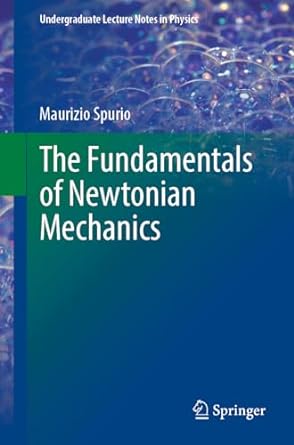A neutron star (NS) is composed of neutrons (particles with no electric charge, mass (m_{N}=1.67 times 10^{-27}
Question:
A neutron star (NS) is composed of neutrons (particles with no electric charge, mass \(m_{N}=1.67 \times 10^{-27} \mathrm{~kg}\) ). The distance between neutrons is \(d=2 \times 10^{-15} \mathrm{~m}\), as is the case between protons and neutrons within atomic nuclei. Theory and observations confirm that NSs have a mass about 1.5 times that of the Sun, \(M_{\odot}=1.99 \times 10^{30} \mathrm{~kg}\). Recalling that \(G=6.67 \times 10^{-11} \mathrm{~N}\) \(\mathrm{m}^{2} / \mathrm{kg}^{2}\) ):
1. estimate the density (in \(\mathrm{km} / \mathrm{m}^{3}\) ) of matter in a NS, using \(d\) as the distance between neutrons. Determine the radius \(R_{N S}\) of the NS assuming it has mass \(M=1.5 M_{\odot}\).
NSs are observed when they rotate rapidly on themselves, emitting electromagnetic radiation (and are called pulsars) or in binary systems. The most famous of the latter is the Hulse-Taylor system, discovered in 1973, consisting of two NSs that lose energy by emitting gravitational waves.
2. Determine the value of the reduced mass of a binary system of two NSs.
3. The Hulse-Taylor system has measured period \(\mathrm{T}=7.75 \mathrm{~h}\). Determine the distance \(\mathrm{R}\) between the two NSs, and compare it with the solar radius \(\left(R_{\odot}=0.7 \times 10^{9} \mathrm{~m}\right)\).
4. Determine the kinetic energy possessed by the Hulse-Taylor binary system.
5. Knowing that the energy loss (assumed constant) by gravitational wave emission corresponds to \(d E / d t=-7.35 \times 10^{24} \mathrm{~J} / \mathrm{s}\), estimate how long all the kinetic energy will be dissipated.
6. Considering the total mechanical energy of the system, show whether the two NSs approach or recede from each other by gravitational wave emission, \(d E / d t\).
Step by Step Answer:






